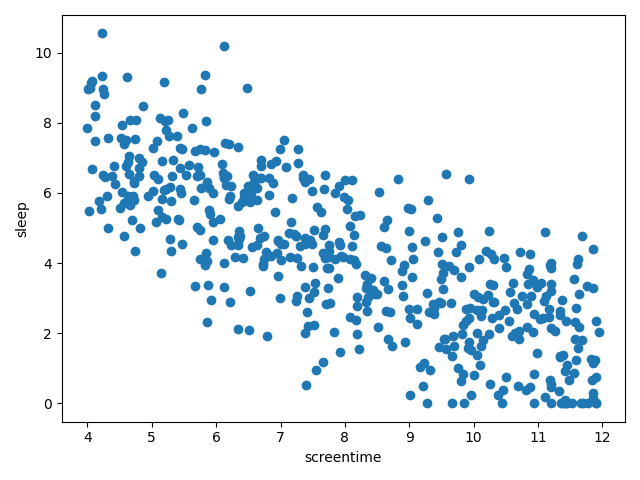Challenge¶
You suspect there's a linear relationship between how much daily screen time a person gets and how many hours they sleep. You acquire the data to investigate.
import numpy as np
rng = np.random.default_rng(123)
screentime = rng.uniform(low=4, high=12, size=500)
sleep = np.clip(-0.8*screentime + 10.5 + rng.normal(loc=0, scale=1.5, size=len(screentime)), 0, 24)
print(screentime[:5]) # [9.45881491 4.43056815 5.76287898 5.47497449 5.40724721]
print(sleep[:5]) # [2.87662678 6.24164643 6.14092628 4.54709214 5.24364 ]Plot
Fit a simple linear regression model to this data using gradient descent with the help of torch.autograd.
View the pseudocode

